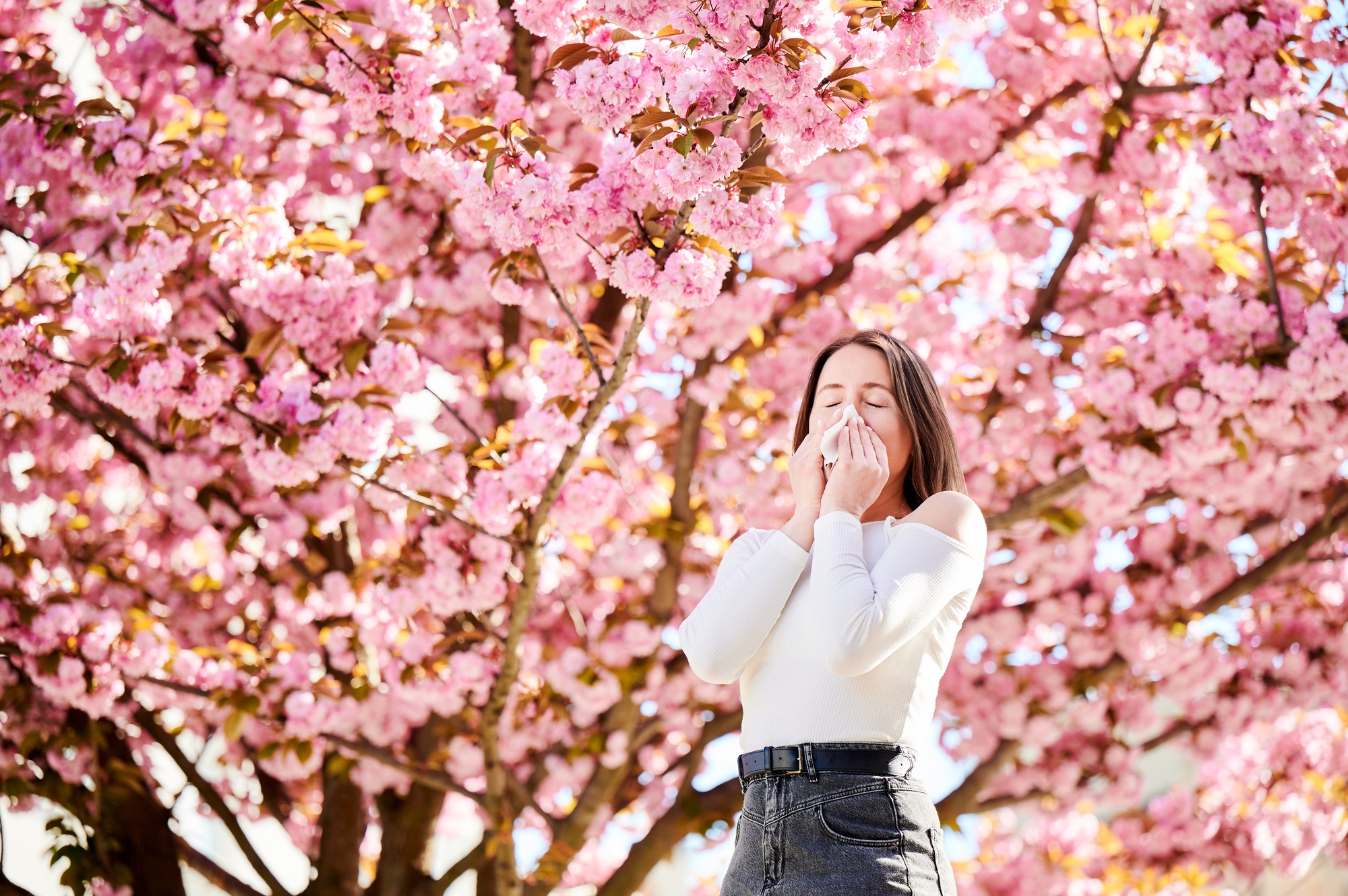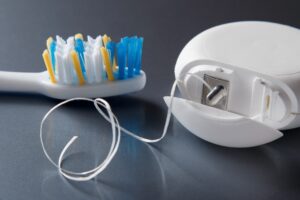Spring is here—flowers bloom, trees bud, and pollen blankets everything. If you’re one of the 81 million Americans who live with seasonal allergies (a condition commonly known as hay fever), you know this time of year can be a mixed blessing.
Runny noses, itchy eyes, sneezing—allergy symptoms can seriously put a damper on the joys of spring.
This guide will help you understand what’s causing your sniffles and provide tips for keeping them under control.
What Causes Spring Allergies?
Spring allergies are typically triggered by pollen, a fine powder released by trees, grasses, and weeds to fertilize plants. As beautiful as spring blooms are, all that pollen floating in the air can spell disaster for allergy sufferers.
When you inhale pollen, your immune system sometimes mistakes it for a harmful invader and overreacts. This leads to classic allergy symptoms like sneezing, congestion, and itchy, watery eyes that can drive you to avoid the outdoors altogether.
Common Spring Allergens:
Tree Pollen (early spring): From oak, birch, cedar, and maple trees.
Grass Pollen (mid-to-late spring): Found in ryegrass, Bermuda grass, and Timothy grass.
Weed Pollen (late spring): Ragweed is a common summer offender, but some weeds start spreading pollen in late spring.
4 Ways to Reduce Spring Allergy Symptoms
Dealing with spring allergies doesn’t have to mean suffering through the season. With a few smart strategies, you can breathe easier and enjoy the outdoors.
1. Minimize Exposure to Pollen
The less pollen you’re exposed to, the better your symptoms will be. Try these tips:
- Stay indoors on dry, windy days or when the pollen count is high.
- Venture outside after a good rain, which helps wash pollen out of the air.
- Avoid activities like mowing the lawn or gardening—these stir up allergens.
- Change and wash your clothes after being outdoors, and shower to remove pollen from your skin and hair.
- Resist hanging laundry outside. Pollen can cling to your clothes and bedding.
- Wear a face mask when doing outdoor chores like gardening or walking the dog.
2. Monitor Pollen Levels
Pollen levels fluctuate daily and even hourly. Tracking them can help you plan your outdoor activities.
- Check local pollen forecasts via websites, apps, or news platforms.
- Close doors and windows, especially at night, to prevent pollen from entering your home.
- Limit outdoor activities during early mornings when pollen counts are at their highest.
3. Try Over-the-Counter (OTC) Allergy Medications
Relief is often just a pharmacy visit away.
Here are some effective OTC medications:
- Antihistamines (e.g., cetirizine, loratadine) help stop sneezing, itching, and runny noses.
- Corticosteroid nasal sprays (e.g., fluticasone, budesonide) reduce nasal inflammation.
- Cromolyn sodium nasal sprays are great for preventing symptoms but need consistent use.
- Decongestants (e.g., pseudoephedrine) provide temporary relief from nasal stuffiness.
Always consult your doctor for the best treatment options—especially if you have other health conditions.
4. Rinse Your Nasal Passages
Nasal irrigation is a simple and natural way to flush out allergens and ease congestion.
Use a saline spray or solution to rinse your nasal passages. You can purchase saline solutions or make your own at home! Combine:
– 1 quart of distilled/boiled water (cooled)
– 1.5 tsp canning salt
– 1 tsp baking soda
– Use a clean neti pot or squeeze bottle, and wash the device after each use with safe water.
Conclusion
By following these tips, you can minimize exposure to allergens, manage symptoms effectively, and make the most of springtime. Preparation is your best defense, so start monitoring pollen levels and stock up on any medications before allergy season peaks.
If your symptoms persist, worsen, or interfere with daily activities despite over-the-counter remedies, it’s time to see a doctor. For ongoing issues, don’t hesitate to reach out to a professional.







